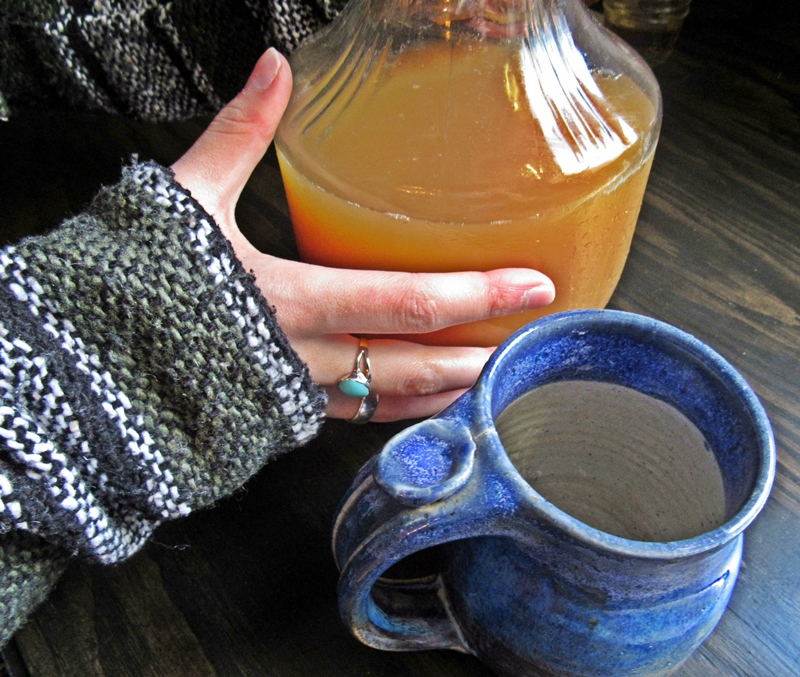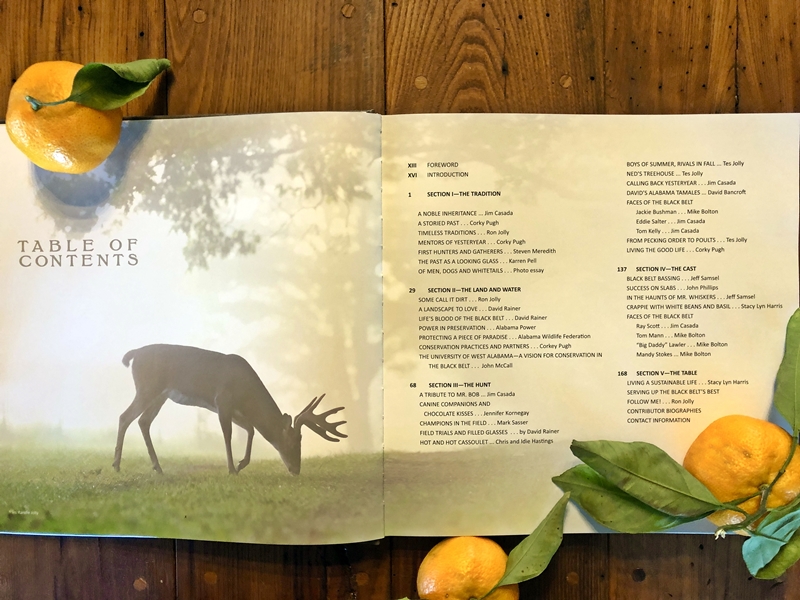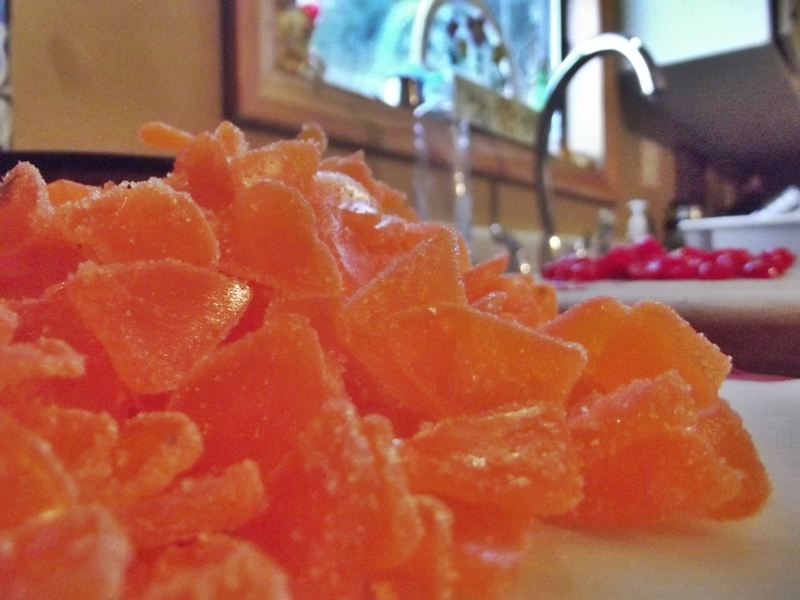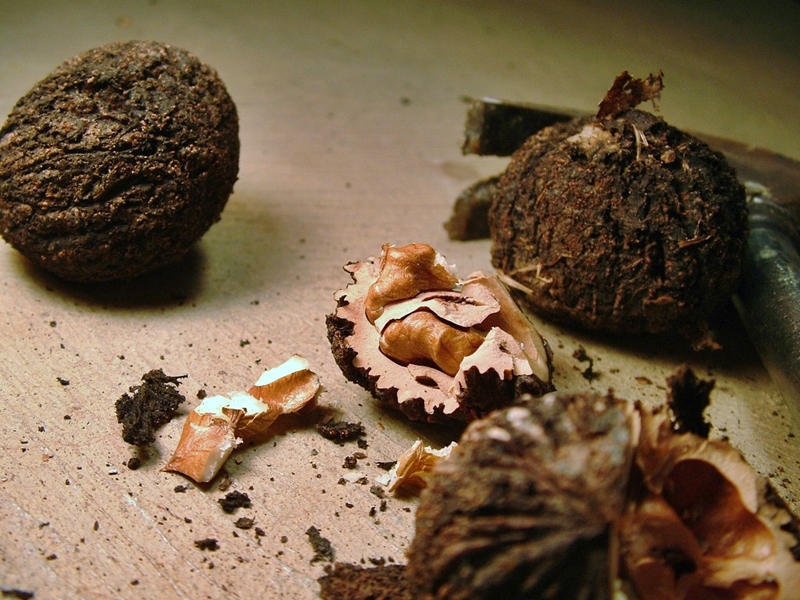A MONTH OF MAGICAL MEMORIES
I think that in certain ways, as we age, we tend to become jaded even as we enjoy the opportunity to draw on decades of experience, view matters from a wider perspective, and perhaps mellow a bit. One of my favorite historical characters, Winston Churchill, once purportedly opined (like many enduring quotations, its origin is somewhat amorphous) that “If you are not a liberal at 25, you have no heart. I you are not a conservative at 35 you have no brain.” I think the latter age might be a bit early (I would change it to 50), but there’s little doubt that many of us, and it is certainly true of me, become more conservative as we grow older. One key definition of “conservative” is being resistant to change, and especially change for the mere sake of change. I certainly fit into that category.
That relates to my thoughts on Christmas, because the things I cherish most about Christmas are, almost without exception, of a traditional nature suggesting that I found (and continue to find) the aspects of the season I enjoyed as a boy satisfying to the point of being soul filling. Here, in no particular order of significance or importance, are some of those many joys dating back many decades.
*Traditional holiday foods, with sweets somehow being to the forefront thanks to my decided “sweet tooth.” See the recipes below for more in this regard.

*Food and drink seemingly available only at Christmas time—stick candy of many flavors, seeded Muscat raisins in clusters, chocolate-covered cherries, Russian tea, syllabub, eggnog, and much more.

In a fine modern example of the “fertile imaginations and frugal planning” I note in connection with using nature for holiday decorations, my brother, Don, and sister-in-law, Susan, have made a practice, for almost a decade, of creating a cross using natural materials gathered in the course of a walk around their home. The end result is both lovely and a reminder of the true meaning of the season.
Photo by Don Casada
*Decorations from nature in forms such as mistletoe; running cedar; strands of popcorn decorating the family tree; holly sprigs; nandina berries; greenery from trees such as cedars, pines, white pines, hemlocks, and balsams; honey locust thorns adorned with gum balls; wreaths made of nuts, cones, grape vines, and more; and indeed about anything which fertile imaginations and frugal planning could concoct.
*Riding about the community at night just prior to Christmas to admire decorations.
*Folks visiting and greeting you with words such as “Christmas cheer” while offering little gifts in the form of things like cookies, a cake, or fudge.
*The local Christmas parade where enthusiasm and good will gave it every bit as much meaning as anything Macy’s and New York City can put together.
*Special events at church—a kids’ Christmas pageant, a holiday presentation by the choir, bell ringing, or congregational singing of carols.
*Remembering the poor, home bound, and down trodden along with those who had done something special for you or meant something special to you. This might take the form of food baskets; a small ham; a batch of baked goods; a couple of bags of basic foodstuffs such as flour, sugar, dried beans, and canned goods; or essential items of clothing. Often there would be a toy or two for needy kids as well. Wonderful charities, and I would put the Salvation Army well to the forefront in that regard (no high-paid administrators or shameful overhead with them), had not yet penetrated the remote little towns of the Smokies, but that didn’t mean the underprivileged were forgotten. Mountain folks at their best have always had a deep appreciation for helping out when it was truly needed.
*Holiday meals with the extended family.
*Listening, almost starry eyed, to the older folks muse on Christmas long before I was born. There were plenty of naturally gifted storytellers in the paternal side of my family, and Grandpa Joe could hold me entranced for hours on end. Daddy had lots of moving Christmas memories, many of them bittersweet in nature, while my Aunt Emma could recite appropriate seasonal poems like nobody’s business. Most of all though I loved tales of when Christmas was the essence of simplicity and gifts for the season might mean nothing more than a single orange, some hard candy, and perhaps some item of clothing knitted by Grandma Minnie or a homemade toy whittled by Grandpa Joe.
*Receiving, Christmas after Christmas, certain predictable gifts—some type of knife (Daddy had been bitterly disappointed by not getting one as a boy and was determined his sons, and later grandsons, would never be without a good blade or maybe several), a box of shotgun shells, some hunting socks, and one type or another of Duxbak hunting apparel.
*The joys, in school days, of having two full weeks and three weekends of freedom to roam the woods, hunt at will, and shed the daily routine of classroom requirements. Those joys became, if anything, more powerful and appealing when I went off to college. Unlike today’s world, where most college students have some sort of transportation and can go home for the weekend if their college is relatively close, boarding students in my late adolescence usually went home either three or four times during the entire college year—for Thanksgiving, Christmas, Easter, and spring break. Sometimes the latter two would be combined.
*The smells of the season. Heady aromas from baking cakes and cookies, the wonderful scent of evergreens used in decoration and emanating from the family tree, the perfume of citrus peel from oranges or tangerines or the tang of a kumquat (I can’t remember having seen one of them in a ‘coon’s age, but they were common at Yuletide in my boyhood).
*Most of all, the general feeling of what was truly peace on earth, at least in that tiny portion of it embraced by the Great Smoky Mountains, and good will to men.
Hopefully, no matter where you grew up or what you age, you have a bunch of similar memories to sweeten your days and lift your spirits in this season. I suspect most of you do, and just keep in mind that such memories, to borrow from a grand old gospel song, are, as they linger, indeed precious.
***********************************************************************************
JIM’S DOIN’S
There’s not a lot to report since last month’s newsletter. One factor has been the deaths of two women whom I greatly admired and who had been longtime friends. One was a high school classmate, Mitzi Eckstein Twine, an elegant, lovely individual who epitomized grace and goodness along with being blessed with a first-rate intellect. The second was Stacey Wheeler, who at the age of 46 left us far too soon, felled by a rare, seldom diagnosed ailment known as cardiac sarcoidosis. A pint-sized pepper pot of perpetual energy, she and her husband, Glenn, a gifted photographer and writer as well as the sheriff of Newton County, Arkansas, became friends through the Southeastern Outdoor Press Association (SEOPA). She was a wonderful friend to my beloved Ann, and a message she sent me covering what Ann had meant to her as a mentor and guide along life’s road, was more powerful and poignant than anything ever addressed to me. A couple thousand folks bade Stacey a sad farewell, and her extended SEOPA family is still recovering from shock and sadness.
While endeavoring to weather the woes of these two deaths and my wife’s ongoing descent into the unknown world of dementia, I’ve sought surcease in the comforting cloak of work. I’ve been busy, perhaps more so than usual, with much of my effort is focused on large-scale, long-range projects. I’ve got the copyedited version of “A Smokies Boyhood and Beyond: Mountain Musings, Memories, and More” back from the University of Tennessee Press, which will be publishing the book. The painstaking process of digging through that material, along with selecting a whole batch of photos for potential use with the book, will be in the forefront of my December endeavors.
Tipper Pressley, the wonderful lady who makes sure you get this newsletter and helps this hopeless idiot when it comes to any and all things of a technical nature, and I are in the final stages of submitting a proposal for a book combining Appalachian food ways, food folklore, and recipes to the University of South Carolina Press. Its working title is “Cracklin’ Cornbread, Cutshort Beans, and Candy Roaster Pie.” I’ll keep you abreast of developments but can assure you that Tipper’s knowledge and practical experience will make this a far finer endeavor than any effort of mine alone would or could ever be.

Speaking of matters on the book front, a work which I edited and to which I contributed a number of sections or chapters, Black Belt Bounty, is now out. It’s a spectacular book from the standpoint of appearance, with scores of images from some of the South’s finest wildlife photographers and more than three dozen stories well and worthily told along with excellent original art. Of coffee table size (11 x 11 inches), with special binding, a calfskin embossed cover, stamped gold on the front and spine, high quality paper, and all sorts of special features, it covers pretty much everything outdoor-related in the region of Alabama known as the Black Belt. It weighs a whopping four and a quarter pounds, so obviously it’s a book with considerable heft. Priced at only $54.95 (postage paid), I actually think it is about $30 less than a book of this quality ought to fetch.

The Black Belt encompasses more than 20 counties stretching across the heart of the state from east to west and is distinguished by (and named for) the dark, fertile soil which is ideally suited for vegetation which produces an abundance of wildlife. My personal contributions, in addition to being the general editor, include a bunch of essays and articles covering everything from “A Noble Inheritance,” a ruminative essay on our rich sporting tradition, to a number of favorite recipes. I also wrote “A Tribute to Mr. Bob” (on the noble quail), “Calling Back Yesteryear” (on the special joys of small game hunting), and biographical profiles of Eddie Salter, Tom Kelly, and Ray Scott. If you would like to know more about the book or order a copy visit alabamablackbeltadventures.org/blackbeltbountybook/.
On the magazine front, if you have access to the quarterly magazine, you can see my latest column in the current issue of Carolina Mountain Life or, alternatively, read it online at cmlmagazine.com (the column, entitled “The Lure and Lore of Snow,” is on pages 69-70). It is on I’ve got material in the current issue of Smoky Mountain Living, a bi-monthly magazine headquartered in Waynesville, NC in the form of a profile of legendary son of the Smokies Wiley Oakley, and I’m close to completing an agreement with the magazine to produce a series of food columns. I hope it works out, because I am really enamored of the publication and the approach it takes to covering high country days and ways in the past and present. If you would like more information, check out their website (www.smliv.com).
THIS MONTH’S SPECIALS
For no other reason than the failure of yours truly to get this newsletter out in a timely fashion, there is no December special. I know I missed the Christmas market, and shame on me. It’s not that I am burdened by an overly big bank account or bulging billfold. Rather, as the weeks, months, and years pass, I increasingly care more about getting words written and countless magical moments from the past conveyed than I do chasing the almighty dollar.
RECIPES
ORANGE SLICE CAKE

I have no idea when the waxy, sugar crystal coated candy known as orange slices first came on the market, but it was available loose in jars (like peppermint sticks and a lot of other candy) from my earliest memories. At some point around 1950 someone in the family, quite possibly my Aunt Emma since I always associate this dessert specifically with her, obtained a recipe for a rich cake which incorporated orange slices into what was almost a fruit cake. Since it contained plenty of black walnuts, an ingredient almost sure to provide any dessert with a doctoral degree in deliciousness, it was a huge hit with me. This recipe was the one Mom used to make the cake.
1 cup butter
2 cups sugar
4 eggs
1 teaspoon soda
1/2 cup buttermilk
3 ½ cups all-purpose flour
1 pound dates, chopped
1 pound candy orange slices, chopped
1 cup black walnuts
1 can flaked coconut
1 cup fresh orange juice
2 cups powdered sugar
Cream butter or margarine and sugar until smooth. Add eggs, one at a time, and beat well after each addition. Dissolve soda in buttermilk and add to creamed mixture. Place flour in large bowl and add dates, orange slices, and nuts. Stir to coat each piece.
Add flour mixture and coconut to creamed mixture. This makes a very stiff dough that should be mixed with your hands. Put in a greased and floured tube pan. Bake at 250 degrees for two and a half to three hours. Combine orange juice and powdered sugar and pour over hot cake. Allow to cool before serving.
CHRISTMAS FUDGE
I don’t recall Momma ever making fudge except at Christmas, although she may have done so. Also, I don’t think Grandma Minnie ever made it, one of the relatively few desserts she didn’t produce at holiday time. Yet someone almost always gave us nut-laden fudge at Christmas. If the nuts were English walnuts, the fudge was good; substitute black walnuts, as the recipe below does, and the treat moved several notches up on the taste scale.
½ pound butter (no substitutes—you are already splurging when it comes to calories, and if you are going to slide into a moment of sinful gluttony, it might as well be done right)
1 can (13-ounce) evaporated milk
5 cups sugar
2 packages (12-ounce) semi-sweet chocolate morsels
1 jar 7-ounce) marshmallow cream
1 teaspoon vanilla
2 cups chopped black walnuts
Melt butter in a large saucepan and add milk. Stir to blend well, add sugar, stirring constantly, and bring to a boil. Boil vigorously for eight minutes, stirring all the while; remove from heat. Add chocolate morsels and beat until chocolate is melted. Add marshmallow cream and beat until well blended and melted. Add vanilla and chopped nuts; blend well. Pour into 12 x 7 x 2-inch buttered pan. Cool at least six hours before cutting into squares and storing in air-tight containers.
BLACK WALNUT CAKE

Beulah Suddereth was wonderful neighbor, cherished friend, and sometime house aide to my parents in their later years. This was especially the case in the final decade of Daddy’s life when Mom was gone. A key figure in the local African-American community, Beulah was a woman of many parts, and any time I could find an hour of two to sit down with her for conversation on matters such as gardening, cooking, or shared memories of some black folks who had figured prominently in my boyhood, I always came away feeling better about the world in general. She was one of those rare people with that quality—just being around her lifted you spirits.
You won’t find much about the contributions African-Americans made to the culinary folklore of the Smokies. That’s because the black presence in the region was always a small one and had nothing like the impact it did in the lower lying regions, especially the historic plantations area, of the South. Yet in the little microcosm of Smokies life in which my family moved and lived, it made a significant difference. That was largely because our home was situated squarely between the two enclaves of blacks, both of them small and together not numbering more than 100 souls, in Swain County. They were our neighbors and you interacted with them in neighborly fashion.
I’ve already mentioned Aunt Mag’s wonderful muskrat stew, and Beulah Suddereth made a black walnut cake Daddy declared was the finest dessert he had ever tasted. After he had been buying Beulah’s black walnut cakes for years I somehow learned what he was paying for them. It was a paltry price indeed, but to Daddy $10 for a cake seemed outrageous. When I noted that a comparable cake from a baker would probably cost at least four times that amount, he replied with all the sincerity of a man who had weathered the depths of the Great Depression as a young adult. “I couldn’t eat a cake costing that much. It would sour my stomach.” My siblings and I accepted that dictate and handled the matter on the sly from that point on—we just secretly paid Beulah the difference. It was worth every penny.
The recipe below isn’t exactly the one she used. When she died I had hoped to obtain her recipe from family members, but somehow it never happened. This recipe is close, but it isn’t the same. Still, it makes a mighty fine cake, and the flavor of black walnuts was always, in my family, something to whet appetites for whatever treat might be involved.
½ cup butter
2 cups brown sugar
3 egg yolks, beaten
2 cups flour
3 teaspoons baking powder
½ teaspoon salt
2/3 cup milk
1 teaspoon vanilla
1 cup black walnuts, chopped fine
3 egg whites, beaten
Cream butter; add sugar and beat until smooth. Add beaten egg yolks and mix well. Combine dry ingredients and add to creamed mixture alternately with milk. Add vanilla and walnuts and mix well. Fold in stiffly beaten egg whites. Bake in a greased tube pan at 350 degrees for 45 minutes or until done.
BUTTER FROSTING
The black walnut cake recipe above tends a bit towards dryness, and if you wish that can be resolved with a simple butter frosting. Here’s one Momma made and used on various types of cakes.
1 stick butter, melted
1 (16-ounce) box powdered sugar
Half-and-half or whole milk
¼ to ½ cup finely chopped black walnuts
Blend melted butter and powdered sugar. Add enough half-and-half to reach desired consistency. Fold in walnuts and frost cooled cake (do not put atop cake until it is fully cooled).
BLACK WALNUT BARS
Throughout the Christmas season there would be, in addition to cakes aplenty, various types of cookies at our house and that of my grandparents. Stored in round tins which had once held things like commercial fruit cakes (Daddy got one at the plant where he worked every Christmas, and far be it from my frugal mother to let a perfectly good container), they were available for a quick snack most any time, and at this season of the year I don’t even recall the normal strictures such as “you’ll ruin your appetite.” As was true of about anything containing black walnuts, I loved these bars.
CRUST
½ cup butter
½ cup packed brown sugar
1 cup flour
FILLING
1 cup brown sugar
2 eggs, beaten
¼ teaspoon salt
1 teaspoon vanilla
2 teaspoons flour
½ teaspoon baking powder
1 ½ cups shredded coconut
1 cup chopped black walnuts
Cream butter and brown sugar. Slowly add flour and mix until crumbly. Pat into a 7 x 11-inch baking dish. Bake for 8-10 minutes at 350 degrees until golden.
Combine brown sugar, eggs, salt and vanilla. In separate bowl, add flour and baking powder to coconut and walnuts. Blend into egg mixture and pour over baked crust. Return to oven and bake for an additional 15-20 minutes or until done. Cut into bars and place on wire racks to cool.
RUSSIAN TEA
Momma always made a big batch, or maybe two or three of them, of this seasonal delight. It was served at family gatherings, to visitors who just happened to drop by, at church functions, and just as a refreshing hot drink on a cold winter’s day. Grandpa Joe loved the beverage, which he called “Rooshian” tea (and I guarantee he had no idea whatsoever of the geographical connection or, for that matter, where Russia might be situated in the wider world). He would take a lip-scorching hot cup, “sasser and blow” it to cool it down a bit, a drink with ample evidence of having been transported into a realm of pure bliss.
½ teaspoon cloves
1 cup sugar
½ teaspoon cinnamon
1 gallon water
1 tall can orange juice concentrate
Extra sugar if desired
Bring these ingredients to a boil and continue for five minutes. Then add:
4 tea bags steeped in a pint of boiling water for five minutes.
¾ cup fresh lemon juice
1 tall can pineapple juice
1 quarter apple cider (optional)
1 ½ cup fresh orange juice
The quantities of juice can be varied if you prefer one taste to another. This recipe will make 20 generous helpings, and leftovers can be refrigerated and reheated as desired.